This is Matthew Patrick.
Born in 1986 in the town of Medina, Ohio, wedged between Akron and the shining, All-American city of Cleveland, Matthew was what I imagine most parents would want out of a child - personable, charismatic, and bright, Patrick would graduated as the valedictorian of his class and attend Duke University on a full scholarship, where he would graduate with a degree in psychology with a concentration in neuroscience in 2009.
Before the year was up, he would be unemployed and struggling to make ends meet in New York City. You see, Patrick, like most children of his generation, was encouraged, first and foremost, to pursue his passion. Follow his dreams. If he kept his chin up, worked hard, and did what he needed to do, he could achieve whatever he put his mind to. Though this is not necessarily bad advice, nor is it totally untrue, for two years, Patrick discovered that perseverance and hard-work weren’t always the magic bullets to reach success as he’d always been told. It’s a bitter pill we’re all confronted with at one time or another in our lives. We learn that, sometimes, success is not contingent on persistence nor a good work ethic, but rather the tenuous connections one might make with certain people, and, even more so, a healthy dose of good luck. The importance - and mercuriality - of being at the right place at the right time cannot be over-stated.
It didn’t help matters any that Patrick’s dreams were of a sort that are notoriously difficult to realize. Patrick had not put down roots in the Big Apple with the intention of making use of his psychology degree. No - he had come so that, one day, he might see his name surrounded by the sparkling lights of a Broadway sign.
Patrick had come to New York to be an actor.
See, Patrick, while achieving his lofty academic goals, had simultaneously pursued his life-long interests in acting and theater. While at Duke, he hadn’t just majored in psychology, but double-majored in theater, as well. While his mind was drawn to the esoteric science of human psychology, his heart was betrothed to the stage.
However, as anyone knows, the field of acting is not the halcyon fields of Elysium, verdant and lush with greenery, vines and branches bedecked with ripe and succulent fruits, and beguiling vixens in various states of undress between ivy-wreathed pillars of marble. Rather, it is a cruel, blasted Hellscape, cratered and pocked with disappointment, blighted by failure, and built upon a foundation of crushed and pulverized dreams, all under the purview of the oft-capricious and indifferent eyes of fates that care little, if at all, for those beneath them.
It was in this tumultuous battleground of competing dreamers that Patrick turned to the internet to bolster his resume. Early into his time in New York, Patrick began to upload clips of his prior performances to submit for auditions and, hopefully, catch the eye of casting directors. As time ground on, and success was sparse, he began to turn his attention to more mundane matters. Rent is too damn high just about everywhere these days, and nowhere more so than in the cramped and teeming boroughs of the Big Apple. He could not live on the generous largesse of his parents nor the scant, supplemental income of a minimum wage job alone.
So, he began to apply for more… respectable jobs. Employment that was more gainful than waiting tables and working the cash register at a nameless, anonymous bodega. Patrick had always been good with numbers, and, to court prospective employers, he chose to reformulate his YouTube page from a glorified casting couch session to a showcase of his analytical abilities, his oratory gifts, and, more than anything, his almost preternatural penchant for comprehensive and thorough research, all of which he sought to compress in easy-to-digest, entertaining videos that would set him apart from the soulless stiffs that populated the sterile, LED-light annals of LinkedIn, with their carefully crafted resumes filled with all the right HR-approved buzzwords.
To do this, Patrick synthesized his love for acting, his disposition towards the scientific and analytical, and his life-long infatuation with video games to publish the first episode of a series he called Game Theory. In this episode, he discussed the quantum mechanics of time travel as they pertained to the highly-regarded and standard-setting Japanese role-playing game, Chrono Trigger.
The video today has 2.7 million views. Combined, Patrick’s successive work has grossed over a total of ten billion views across multiple channels, including Film Theory, Food Theory, and Style Theory, in which Patrick used his methodical, mathematical, and analytic approach to study other fields.
It is estimated that, over the course of his career in online content creation - only thirteen years - Patrick has amassed over ten million dollars through YouTube revenue alone. Over that time, he has run numerous other channels, raised hundreds of thousands in funds for charitable causes, and launched the careers of other popular creators under his banner, Theorist Media. He’s lent his likeness to and cameo’d in numerous video games. He’s easily one of the most recognizable faces on YouTube, a veritable pillar in the world of video game culture, and, most importantly, he cameo’d in the Five Nights at Freddy’s movie.
On January 9th, 2024, Patrick posted a video to the Game Theory channel simply titled, Goodbye, Internet. In this video, he profusely thanked his audience for years of stalwart support and more generosity than he could have ever hoped for or expected. Truly, YouTube and the community he fostered there had allowed his dreams of becoming a well-known and successful media personality to flourish, and then some. He announced that he would be stepping away from the Theory channels and turning them over to hand-picked successors. While he would maintain some influence and even appear in a handful of future videos, he was taking a step back to pursue other endeavors and spend more time with his wife and young child. Truly an admirable goal, and one that I believe more people in modernity should be afforded without having to create an immensely profitable internet media empire to achieve.
Whether Patrick’s Theory empire will stand the test of time and flourish without his personal touch remains to be seen. However, Patrick’s influence upon the gaming scene, internet culture, and even broader culture as a whole cannot be understated.
If that sounds ridiculous, there’s an argument to be made that Five Nights at Freddy’s would have never made the jump to the silver screen without his influence. The only reason he made an appearance in the Five Nights at Freddy’s movie - and the only reason you’ve ever even heard of Five Nights at Freddy’s - is because Patrick was one of the first video game content creators to speak about the game. He and his videos became inexorably intertwined with the series as he sought to decipher the surprisingly complex and gruesome story lurking beneath the thin facade of a simple jump-scare horror game about cursed and murderous animatronics.
He became such an integral part of the series’ meta-story that, for a while, he was the only individual that had managed to make direct contact with the series’ reclusive and infamously camera-shy creator, Scott Cawthorn. If it tells you anything about Cawthorne and Patrick’s relationship, he once famously dropped in unannounced to one of Patrick’s livestreams of the seconds Five Nights at Freddy’s game and donated a staggering $35,000 of his own money generated by the Five Nights franchise to Saint Jude’s Children Research Hospital on a lark. As one does.
In total, he made sixty eight videos pertaining to the Five Nights at Freddy’s series, the earliest of which offered the exposure that would ultimately raise Scott Cawthorne’s personal net worth to north of seventy million dollars. Five Nights at Freddy’s, in turn, inspired countless creators who would begin their careers making Five Night fan games and end up creating much, much more. The popularity of this franchise, in large part due to Patrick exposing it to his audience, profoundly shaped the landscape of independent game development1.
Patrick was considered such an influential figure in the YouTube ecosystem that he was selected along with eleven other content creators to have a personal meeting with Pope Francis in the Vatican.
Truly, a meeting of the minds.
Why, exactly, the Pope or the people around him thought such a gathering was worthwhile, or what any of these people would have to say to him would be of any value, I’m not sure. The event was something of a media circus on YouTube basically everyone except the eleven creators chosen to rub elbows with the Bishop of Rome clowned on the entire event.
Every creator that attended came with a gift for the Pope. I do not know any other creators who attended, nor do I know what they brought for him. But I do know that, among them, Patrick was singled out by the sheer absurdity, if not the audacity, in his decision to, of all things, bestow upon his Holiness a copy of the video game Undertale.
This was a puzzling decision on pretty much every level.
For one - just the idea of giving the Pope a video game is patently absurd. Just reread those words and try not to snicker at the idea.
For another, he gifted the Pope a code to be redeemed on the virtual video game platform and market place, Steam, which meant that he basically handed the Pope a scrap of paper with a bunch of letters and numbers on it and said, Bro. Francis. You gotta try this shit, it’s straight gas.
Okay, he didn’t say that - or I don’t think he did - but still. The thing is, to redeem a gift code for a free game on Steam, one must first have a Steam account, which - call it a hunch, but I doubt the Servant of the Servants of God has installed of his personal Pope PC. If he even has one of those. I also doubt that the Pope, well into his silver years, really has much interest in playing video games, let alone the time to sit down and indulge in a nice, late night gaming sesh, even if he had any desire to. Then again, who knows - maybe XxXPatriarchOfDaWeztXxX is racking the up dubs on Fortnite right this very minute.
Patrick’s reasoning for giving the Pope an I-O-U to be redeemed at the House that Gaben Built for a copy of Undertale is also, in my opinion, is… okay. It’s pretty goofy. He claimed that the game presented a story of compassion, forgiveness, and personal discovery that, in his mind, aligned with the teachings of the Catholic Church and Jesus Christ himself. He said that the game had changed the face of the video game landscape and united gamers in a way that had never before been seen, even claiming that it had helped heal the rift in the gaming community wrought by the tectonic inter-cultural conflict of GamerGate.
I won’t say that Patrick is entirely wrong… but those are also awful bold, if not audacious claims to make.
For one, I do not think that the damage inflicted upon the gaming culture and larger pop culture sphere by GamerGate was ever healed in any meaningful way. Both opposing camps still hate each other and want nothing more than the destruction of the other. If you’re curious as to why, or want more background on the event, I’ve written about it previously here.
For another, while Undertale certainly does espouse themes of forgiveness, compassion, friendship, and all those other fluffy, nice, highfalutin things… that’s only if you choose to play the game like that. Undertale is a game in which the player can proceed through the narrative in many ways, and every choice they make and the resulting consequences ultimately alter the game’s ending. In Undertale, every single enemy encountered in the game can be spared if, rather than fight them, you choose to talk it out with them like reasonable, mature adults. If the player follows this route, redemption and forgiveness are central themes and, by the end, everyone sits down and holds hands and sings, I’d like to buy the world a Coke a Steam Key for a Copy of Undertale, in perfect Harmony.
However, if one is more… violently inclined, you can also slaughter every single wayward NPC that happens to catch your eye until the game’s overworld is a dark and silent charnel house. Even the friendly characters can be brutally, mercilessly executed. This route is known as The Genocide Route for a reason.
One couls rightly say that Undertale is a game about love, compassion, forgiveness, other and other Christly teachings, and is simultaneously every bit a game about betrayal, nihilism, brutality, and, perhaps most germane to this conversation, not forgiving a god damn thing.
It all depends on the player. Which begs the question - if the Pope did play Undertale… what route do you think he would choose? These are the questions that keep me awake at night.
But, if Patrick was correct in any statement he made about Undertale, it was that it did, indeed, change the face of gaming.
I was there. I remember.
Funded by contributions gathered via a Kickstarter campaign, Undertale was quietly released on Steam on September 15th, 2015 after a grueling thirty-two month development cycle. Outside of the visual elements, which were created by an artist named Temmie Chang, the entire game - the music, the dialogue, the coding, everything - was done by one man who started the project on a complete lark with very little video game development experience.
There’s several stark comparisons between Undertale’s creator, Toby Fox, and the aforementiomed Scott Cawthorne: both made their games more or less single-handedly, both experienced the same rags to riches success story, and both are notoriously reclusive. At the time of Undertale’s release, pretty much everyone thought Toby Fox was a pseudonym (it isn’t). Though pictures of him do exist, they are few and far between. For years, this was the only picture of him that was publicly available. And even that claim was dubious.
However, after making an appearance at the 2017 Playstation Awards to collect one of the dozens of trophies he was raking in, we know what he looks like now. Here’s him in a candid moment.
When Undertale released in September of 2015, it was to very little fanfare. It was an independent title that had a grand total of no marketing and produced by a creator that was effectively anonymous. Outside of a small but devoted gaggle of followers that knew Fox from his other work - which we will talk about shortly - basically no one was excited about it, or even knew to expect it. Word of mouth was the chief means through which knowledge of Undertale spread through the game-o-sphere.
I remember in December of 2015, I attended the anime convention, Ikkicon, in Austin, Texas, only three short months after the release of Undertale. And I am not exaggerating when I say that, as I looked down into the atrium from my hotel room’s balcony with a frosty Dale’s Pale Ale in hand, I saw hundreds of people cosplaying characters from the game.
Undertale didn’t just get big; it got huge, it got huge fast.
The Undertale fandom is by far and away one of the most sprawling and vibrant communities I’ve ever seen. Though they’re far from the largest fandom - which isn’t to say it’s small, just that there are certainly bigger fish - they are nothing if not ambitious, with more fan art, fan fiction, fan music, and even entire fan games than anyone could ever hope to engage with in one lifetime. Just as recently as December of 2023, a full fan-made prequel that is just as long if not longer than the original game was dropped by a passionate group of fans after seven years in development, all with Toby Fox’s blessing, and all released for free.
Once the game began to gain notoriety, larger video game publications and reviewers began to talk about it. The acclaim it received was universal and unanimous. If there was an Indie Development award or an Outstanding Achievement award to be given at the litany of gaming-centric award ceremonies the following year, Fox added it to his collection.
Now, I've met who aren't crazy about Undertale. But I've never met anyone who hated it. More importantly, when it comes to people in the gaming and larger nerd-culture sphere, I've never met anyone who hasn't played it.
The story of Undertale and the game itself proper is a fascinating one that deserves an entire series of articles unto themselves, but, suffice to say, this praise and popularity is not unwarranted. Undertale is, frankly, a phenomenal game that I would argue transcends the usual limitations of the medium. It was, by my estimate a ground-breaking game of a type that, in an industry as stagnant, sclerotic, and ossified as that of video games, I wasn’t sure even could be made. I would go so far as to call it a masterpiece of the medium.
The art? Dripping with character. The dialogue? Toby Fox is a gifted writer with a great knack for humor and the oh-so-rare ability to give each and every character a distinct voice that makes them all feel fully realized and unique. The story? I can’t even touch on it now, but, believe me - it’s equal parts funny, depressing, charming, heart-wrenching, and uplifting, all in one convenient package. Despite having only clocking in at about five hours of gameplay if one chooses to breeze through it, there are enough secrets and multiple, branching narratives from the core story that provide many more hours of replay value. The most impactful element of Undertale, however, was the soundtrack.
This is a bold statement to make, but I genuinely think the soundtrack to Undertale is perhaps one of, if not the greatest, video game soundtracks of all time. There isn’t a bad track from beginning to end. To be completely, totally, and unflatteringly honest, there are tracks on it that make me emotional to an embarrassing degree. The game made no small impact on me, both through the narrative, the memorable characters, and the fun my friends and I had both playing and discussing it.
Some of these tracks just get me like a jab directly in my emotional kidneys. Perhaps - no, it’s definitely in part the nostalgia for a better time in my life and all the things and people in it that are no longer with me, but… Good God.
What? Why are you looking at me like that? I have something in my eye, okay? I’m not tearing up.
Shut up.
I’m sure this track has less of an effect if you don’t have the same history I did with the game, but trust me - that’s the kind of thing this game did and continues to do to people. Especially those of us who were there at ground zero when it detonated like a nuclear weapon of emotion and creativity and, in a way, I think redefined a lot of our perceptions of what a video game could be and, and more importantly, the stories they could tell. Like, if you couldn't tell, or I haven't made it clear yet - I really do like Undertale.
But while every song on the Undertale soundtrack is worthy of praise, there is one stand-out track that has superseded the others and become a genuine, bonafide video game legend.
And I do not mean that lightly.
Undertale was that rare piece of media that everyone who played it shortly after release instinctively knew was an instant classic. Everyone who played it knew it was going to be an experience that they remembered. It was going to be a game people talked about for a long, long time, and we all knew it.
And one of the moments everyone knew they would remember and talk about was the fight with one of the most endearing characters of the (under)tale - Sans.
Sans is a skeleton (just go with it) that the player meets early on into the game. He’s chill. He’s relaxed. He’s always making shitty jokes and doesn’t take much of anything seriously, just kind of shuffling around in the background, turning up in odd places, and saying cryptic things that make one believe that the laid-back, devil-may-care attitude he projects isn't sincere, and that he knows more about what's going on in the narrative than he lets on. And, if you play the game without killing another character, or just kill a handful of enemies that are truly antagonistic, that’s all he really is - just a goofy skeleton guy.
But if you play the Genocide Route - in which you must kill Sans’ brother…
You are made to endure one of the most infamously difficult, kick-ass boss fights in the history of video games. There’s some disagreement about which boss presents the most challenge in Undertale. Most agree that it’s Sans. It’s fifteen fucking minutes of non-stop bullet hell that begins without warning, without preparation, and if you aren’t expecting it, you die instantly.
To say it’s jarring is an understatement.
While the emotional aspect of why Sans’ boss fight is so good would require a text-book worth of primer about the greater story of Undertale, the secret sauce that really elevated the battle from just another boss fight and brought Sans on par with other iconic video game antagonists like Final Fantasy VII’s Sephiroth, Lady Maria from Bloodborne, or Xemnas from Kingdom Hearts II, was the music. Which, yeah - every great boss needs a bad ass theme to back them up. All of the aforementioned greats do. And Sans is no exception.
I really cannot describe how arresting it is when the boss fight starts and, in total silence, your thrust into this insane, rapid-fire barrage of attacks that you just aren’t expecting, and, if you survive - which you won’t the first couple times - this song comes on, and the intention is clear - the real shit is just getting started.
I don’t think it’s an understatement to claim that Megalovania might be the single most influential and iconic piece of music to come out of any video game of the 2010’s, and probably afterwards, too. Like I said - they don’t make games like Undertale much, and there are few things that feel like as much of an instant classic as Megalovania.
It’s been covered, remixed, mashed-up and reimagined thousands of times, and done is quite possibly every genre you can imagine with every instrument in existence. I’m pretty sure there’s Kalahari bushmen banging this shit out on sticks and hollow logs.
If you think I’m exaggerating, Sans became such an iconic character in such little time that there were demands to have him added to the legendary Nintendo brawler title, Super Smash Brothers Ultimate. Hard as it is to believe, Masahiro Sakurai - the director and creator of the Super Smash Bros. series and Nintendo royalty - traveled to America to meet with Toby Fox. They played a little Smash Brothers together, as we all would love to. And, while Sans was not included in the ultimate cut of the game… they did as him as a costume for the Mii character in celebration of Undertale being ported to the Nintendo Switch console, at the time.
If you want to know how well this recieved, just watch this reaction from fans at the Nintendo store in New York City watching the reveal in real time.
While it is admittedly silly to get this worked up over a video game announcement, the level of unbridled enthusiasm is of a caliber we should all wish to feel once in our lives.
Toby Fox also had the privilege of providing a new rendition of Megalovania specifically for the game.
No other character - or franchise - that was only represented by a costume in Smash Brothers got such an honor.
And, let’s touch back to our friend back in the Vatican for a moment. Do you think Pope Francis actually ever made good on MatPat’s gift, put down the scepter for a minute, and played him some Undertale?
Probably not.
Right?
Yeah. I don’t know. He’s never confirmed it. He’s never denied it, either. But I watch that video, and, every time, I just…
It’s not surprising that one of Undertale’s strongest elements is the soundtrack, either. Not really.
Toby Fox, before he decided to say Fuck it and make one of the best video games of all time on a whim, was first and foremost a musician. A composer, even. In fact, when he’s not working on the follow-up psuedo-sequel to Undertale, Deltarune, which, I’ll give you a hint - anagram - he’s composing music for Nintendo games on the regular, up to and including fucking Pokemon. You know - only the single most profitable IP on the planet, at the moment. Oh, and Deltarune? It’s so popular that Nintendo chose it as one of the games to be announced2 alongside their next fucking console.
If it sounds like a Cinderella story, that’s because it is.
But, here’s the interesting thing; despite having never developed a whole game before, Toby Fox had actually made a game before. In fact, Undertale wasn’t the only game in which Megalovania appeared as a boss theme.
In 2008, a teenage Toby Fox would release a mod for the legendary and venerated SNES role-playing title, Earthbound - also known as Mother 2 in Japanese - which is a game and a fandom that is a sprawling, subterranean rabbit burrow unto itself. To keep it brief, Earthbound/Mother is a quirky, utterly fantastic, and wholly unique trilogy of role-playing games developed by HAL Laboratory - a second-party developer for Nintendo - and created by another amateur in the video game industry, Shigesato Itoi.
Much like Fox came into the space as a developer with very little experience in the field, Itoi’s vocation was, of all things, a writer. Itoi found success writing non-fiction essayist and copywriter who wrote advertisement slogans, which you wouldn’t think would be fields one could become a national celebrity in… but he did.
The only reason the Mother series ever saw the light of day is solely because Itoi quite literally just decided that he was going to make a game after playing the wildly popular Dragon Quest role-playing games and thought, I could do better. Oh, and he had the clout (and cash) to walk into HAL Laboratory, tell them he wanted to make a game, and they said, Yes, Mr. Itoi, of course. Here’s your new office.
Which really makes me believe that people who are writers, musicians, longshoremen, baristas, astrologers, HVAC repairmen, welders, football quarterbacks, quantum physicists, indigenous Amazonian tribesmen, my dog, and generally any who is not a video game “professional” are the people who need to be coming up with ideas for games, not people who are working in the industry.
The fandom surrounding the Earthbound/Mother games, while historically very small, is very creative and extremely robust. It was the proto-Undertale fandom in a lot of ways. I often say about great but obscure bands - you’ve never heard of them before, but they’re your favorite band’s favorite band. Earthbound, similarly, may not be a series you’ve heard of, but someone you respect most likely loves it3. Much like Undertale did in 2015, these games set a new standard for what a role-playing game could be at the time.
But, for years, it was strictly a relegated to a cult following status. It still somewhat is. I remember my first introduction to the series was when I first booted up Super Smash Brothers Melee in the dark, distant past of 2001. The roster included the familiar faces of the Nintendo GOATs. You know you got your man Mario, Yoshi’s showing up, we got Pikachu, we got Kirby, we got Luigi, we got White Woman Girl-boss™ from that one space game for a little female representation, Star Fox to throw the furries a bone, and you know you can’t forget Donkey Kong, and… uh…
Random kid with a baseball bat?
Well, that random kid with a baseball bat was the protagonist to Earthbound, which was released in America in 1995. Due to a botched marketing campaign that relied on gross-out humor that was entirely unreflective of the game’s contents, the game flopped in America and moved very few copies. As it turned out, putting scratch-and-sniff stickers that smelled like actual shit from a butt on the game’s box that read, THIS GAME STINKS!, made people avoid it. I’m not sure why this was a surprise to Nintendo of America, or why they would need to be told why that would turn off prospective buyers, but, someone there needed to hear it, apparently.
But everyone who took the risk and played it? Oh - they fucking loved it.
It’s almost not surprising that Toby Fox was making mods for Earthbound, because the similarities between it and Undertale, thematically, artistically, even musically, are immense. The through-line from Earthbound to Undertale is bold, long, and straight. Many, many games have been inspired directly by Earthbound, and, again, like, Undertale, its impact on future titles and the influence of the creator on later games and creatives cannot be understated.
This mod for Earthbound that a young Toby Fox made while living with his parents and attending high school in his native Manchester, New Hampshire, was simply called the EarthBound Halloween Hack. This is the first known publicly released work by Toby Fox of any kind. Like any true artist talking about something they made in high school, Fox claims it’s a bad rom hack with too many swears.
This did not seem to be how the Earthbound community felt. The mod, despite being short and perhaps tastelessly edgy (as to be expected from something created by a high schooler), was well-made, fun, and featured a custom soundtrack that was, predictably, regarded as the best aspect of the project.
Can you guess what the final boss theme was?
And believe it or not, this mod - which was the only other game that Toby Fox ever made prior to Undertale - was not the only other appearance of Megalovania.
In fact, before Undertale, before it became emblematic of that game and inherently tied with the character of Sans, yet after Fox's Earthbound mod, the song Megalovania appeared in another project, and was (and is) infamously associated with another popular character.
It was this project that Toby Fox would make a name for himself, where he contributed as a musical collaborator. It was here that people would learn about his skills, and, had it not been for the notoriety he accrued among the community of fans around it, it’s likely that Undertale would have never met the crowdfunding goal it set on Kickstarter, and the game would have been one of many dead and unrealized dreams.
Though Fox - then going by the online handle Radiation - would have already contributed several songs to this project over a small handful of years, it wouldn’t be until January 5th, 2011, that he would become a celebrity in the project’s fandom when Megalovania was featured in an animation for something that isn’t a webcomic, but only called so because there’s no other word that really comes close to defining it.
With this animation, the song would be permanently and inextricably associated with the character of Vriska Serket.
Vriska Serket is, in a single word, a bitch. A huge bitch, as she is called by many of her contemporaries. She is every four-letter aspersion you could cast against a woman and more. She is genuinely a reprehensible person… or alien, I guess, since she isn't human. She’s a troll in the most literal sense.
And I am not exaggerating - not a bit - when I say that, for reasons we will discuss later, she may be the single most contentious character in all of fiction.
People love Vriska. People hate Vriska. People love to hate her, and people hate to love her. But everyone who's ever read the story she's from has an opinion on Vriska. And everyone who's read that story remembers her.
I won’t lie to you - Vriska Serket is one of my favorite fictional characters of all time. Bar none. Easily in the Top 3.
If you want to know how serious I am about that, for years, a staple of my wardrobe was Vriska's iconic shirt - a simple black t-shirt with a blue Scorpio4 symbol on the chest.
All these years later, I still bust it out every now and then to show my love and rep my Scorpio pride.
The piece of media that Vriska Serket comes from is Homestuck.
And, again, I must be honest - no other single piece of media has had as much influence on me as a creative than Homestuck. There is a not insignificant chance that, without Homestuck, you wouldn’t be reading this right now; I started writing in earnest because of Homestuck.
Undertale was made by a long-time contributor who made his name working on Homestuck. Undertale and Homestuck both were set into motion by Earthbound. Which results in Matthew Patrick giving a copy of Undertale to the Pope.
Creatives unwittingly set in motion an unknowable chain of events that echo long into posterity, and this very publication is just one of the myriad of minute and perbaps even negligible ways that the immense influence of Homestuck and its creator upon the internet is still manifesting to this day, and why it’s still relevant close to a decade after its conclusion.
And I want to talk about it.
Next time.
DISCLAIMER: Hi. Post-Script YakubianApe here. Full disclosure - we will not be talking more about Homestuck next time, as the follow-up articles I’ve been working on are A) Many B) Research Intensive on a scale I’ve yet to encounter and C) Difficult for a multitude of reasons. While I am working on them, they will not be forthcoming for quite some time. Consider it the genuine Homestuck experience, by which I mean it’s gonna be a long fucking time before we reach the conclusion of this one, and there will be several intermissions in between.
So, why did I release this now? Because today - 4.13 - is a day of dubious importance, and it seemed like an apropos time to [S] Begin.
Happy 4.13 to all who celebrate.
Yes, yes - I know Markiplier’s now legendary series of Let’s Plays did a lot to raise the profile of the Five Nights franchise, but the story behind the games that intrigued so many players was uncovered and exposed by Patrick on Game Theory. I’m convinced he did the lion’s share of the work.
Okay, well, Deltarune itself has been out since 2018, but it’s a serialized release, so the next two highly anticipated chapters were announced alongside the Nintendo Switch 2. Along with a port to the console.
That person… is me.
And, yes - I am a Scorpio. No, this is not why I like Vriska. But it is apropos.





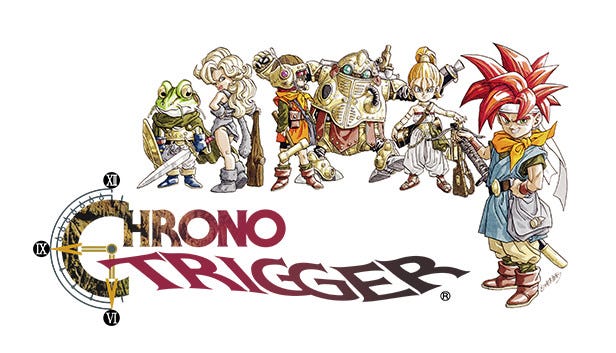
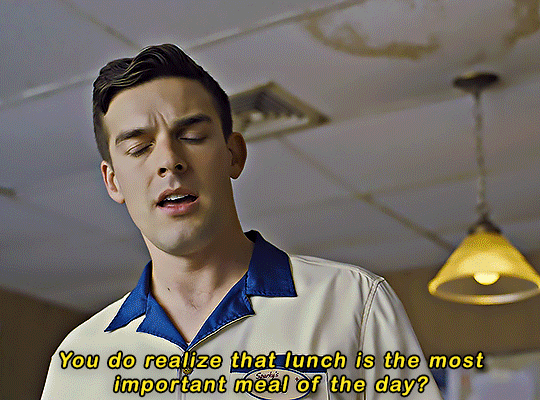
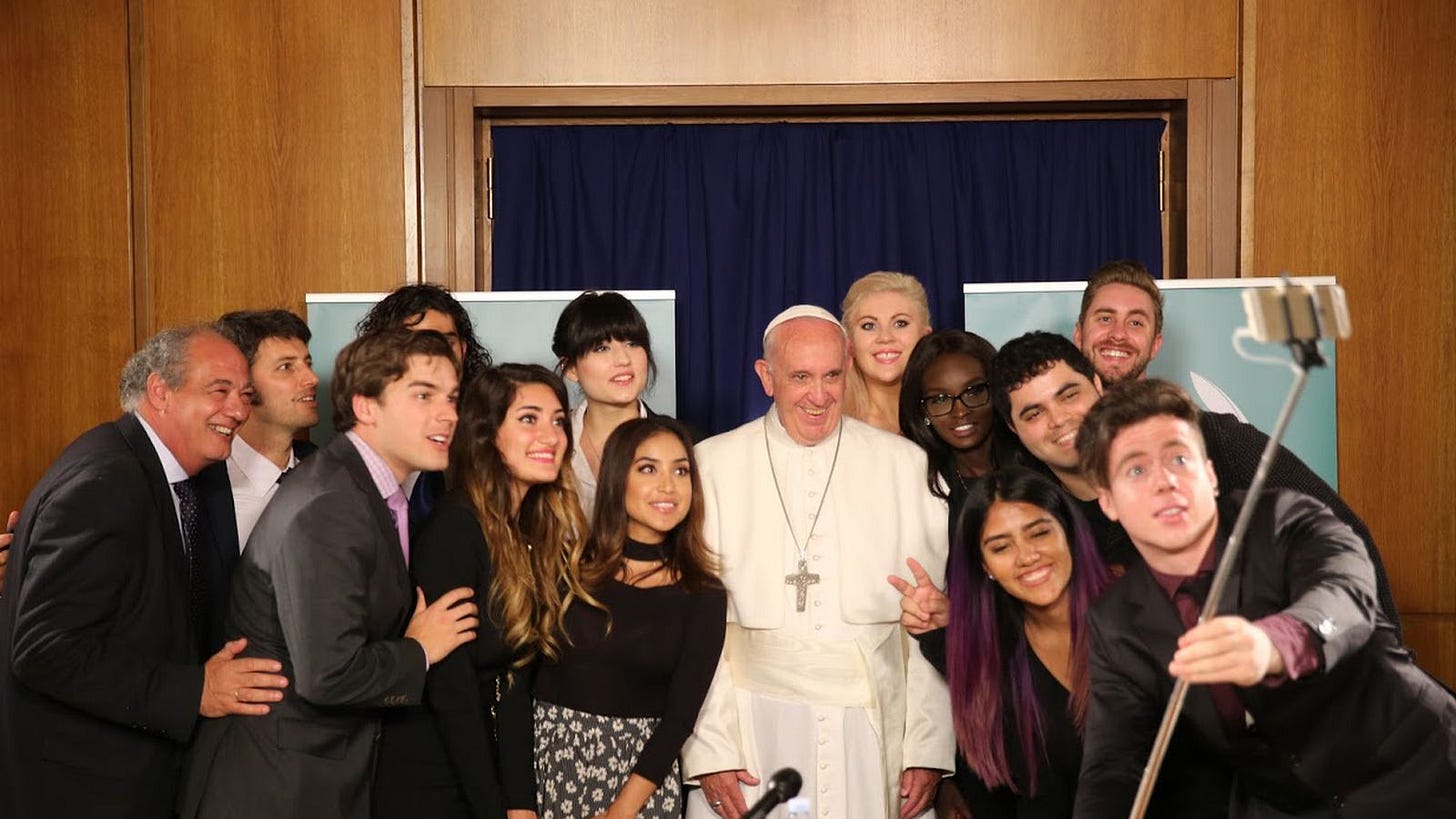


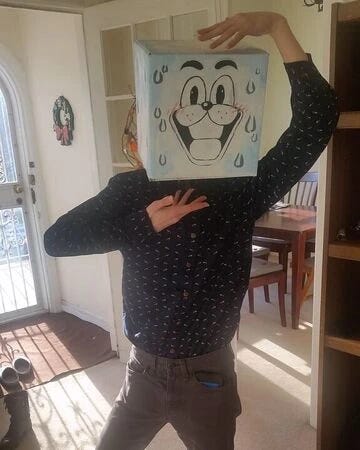


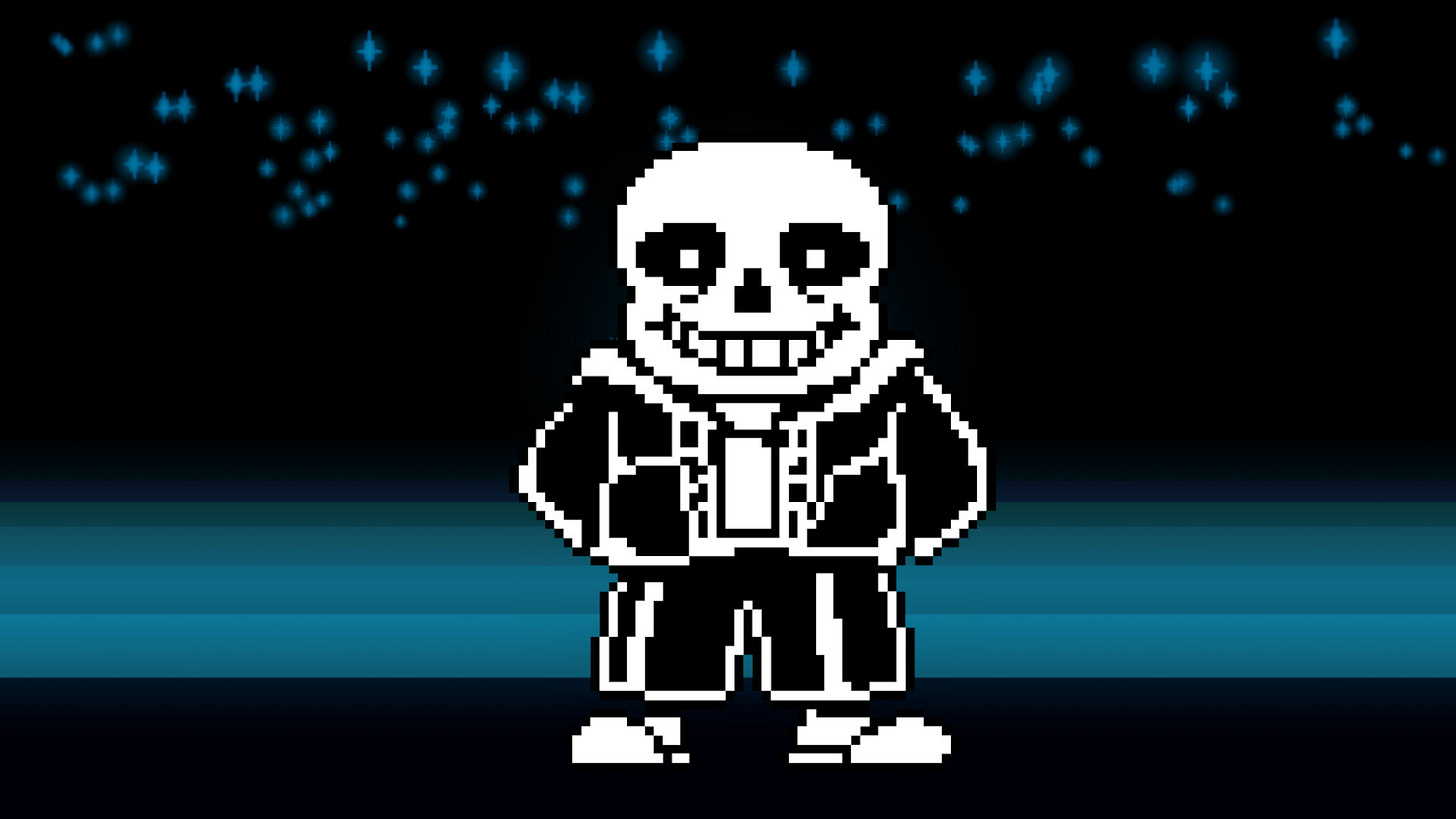
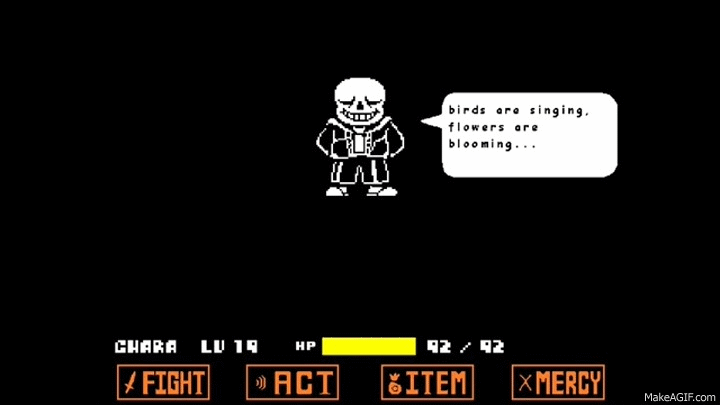



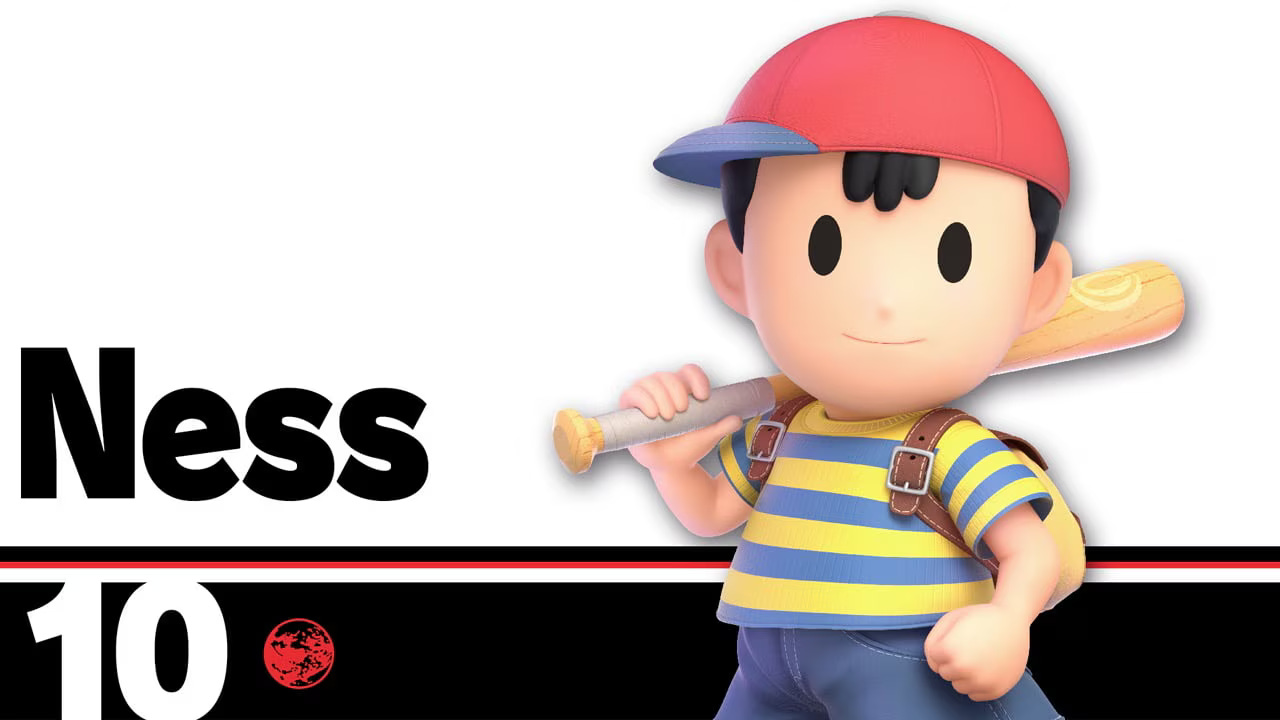




I knew exactly where this was going when I saw the [S]
Man, I've missed a lot of culture since I've gotten old. I don't regret it, exactly, but it sounds like there's some fun experiences that I've missed out on.
How old am I? Well, let's just say that I played (and loved) Earthbound, but I've never heard of any of the other people or games referenced.
Life comes at you fast.
Thanks for another fun and educational piece!